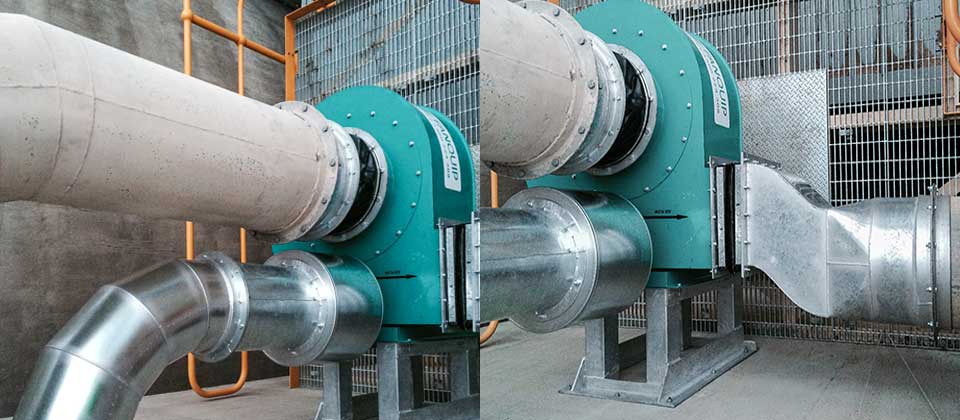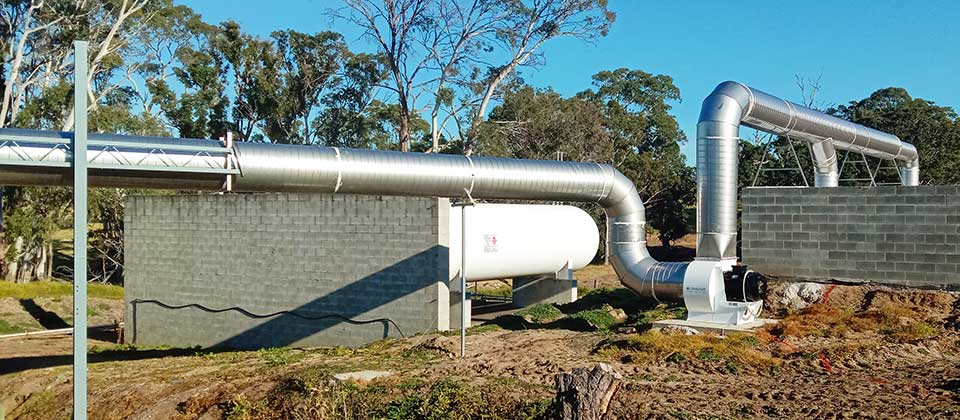Centrifugal fans, often a key component in commercial and industrial businesses, are essential for a variety of air moving applications. But what exactly is a centrifugal fan, and how does it differ from other types of fans, such as an axial fan? In this blog post, we will explore the workings, types, uses, maintenance, and advantages of centrifugal fans, especially in the context of Australian commercial and industrial settings.
How Do Centrifugal Fans Work
Centrifugal fans, also known as centrifugal blowers, operate using centrifugal force. This type of fan increases the speed of an air stream with a rotating impeller. The fan consists of a motor that rotates the fan’s blades, typically curved blades. When the blades rotate, they drive air radially and outward into a housing, creating a high-pressure airflow. This mechanism allows centrifugal fans to generate air at high pressures, making them particularly efficient in high volume and high-pressure applications.
What Are the Different Types of Centrifugal Fans
Centrifugal fans come in various types to suit different applications. The primary types of include:
- Backward Inclined Fans: Known for their energy-efficient design, these fans have curved blades that are inclined backward against the direction of rotation. They are ideal for clean air applications and are recognised for their low noise levels.
- Radial Bladed Fans: These fans feature straight blades and are suitable for applications involving dust or particulate-laden airstreams. They are known for their robust construction and durability.
Each type of centrifugal fan offers unique advantages, making them suitable for different industrial applications.

What Are Centrifugal Fans Used For
Centrifugal fans are versatile and find use in a variety of applications. They are particularly effective in systems that require moving large volumes of air at high pressures, which include:
- Air Conditioning Systems: Centrifugal fans are widely used in air conditioning systems for both residential and commercial settings. They are capable of handling high volumes of air required to maintain comfortable temperatures and air quality.
- Industrial Applications: In industrial settings, centrifugal fans are used for material handling, conveying, and in clean air processes, especially in the food industry. They are suitable for environments that demand high static pressure and airflow rates.
- Exhaust Systems: As exhaust fans, they are used to remove air pollutants and maintain air quality in manufacturing and processing industries.
- Ventilation: For ventilation purposes, centrifugal fans are used in various settings, including commercial kitchens, where they help to remove odours, smoke, and heat.
In What Industries are Centrifugal Fans Used?
Centrifugal fans are versatile and used across a wide range of industries due to their ability to move air efficiently at high pressures and volumes. Some of the key industries where these fans are commonly used include:
- HVAC (Heating, Ventilation, and Air Conditioning): In this industry, centrifugal fans are used in air handling units, furnaces, and ventilation systems to circulate air in residential, commercial, and industrial buildings.
- Manufacturing and Industrial: These fans are essential in manufacturing plants for providing necessary ventilation, removing dust and other particulates, and in processes that require air movement, like cooling and drying.
- Food and Beverage Processing: In the food industry, centrifugal fans are used in processes like drying, cooling, and ventilating. They are crucial in maintaining appropriate temperatures and air quality, which is essential for food safety and preservation.
- Pharmaceuticals: In pharmaceutical manufacturing, centrifugal fans are used to ensure clean and controlled environments, which are critical for product quality and safety.
- Mining: They are used for ventilation purposes in mines, helping to supply fresh air and remove harmful gases and dust.
- Agriculture: Centrifugal fans are used in agricultural applications for grain drying and ventilation in greenhouses.
- Automotive: In automotive manufacturing, these fans are used in paint shops and for ventilating manufacturing units.
- Waste Management: Centrifugal fans are used in waste treatment facilities for aeration and to control air quality.
- Chemical Industry: They are used to handle corrosive gases, control fumes, and in processes like drying and cooling.
- Power Generation: Centrifugal fans are used in power plants for various applications, including cooling, combustion air supply, and exhaust systems.
In each of these industries, the specific type of centrifugal fan used (such as backward inclined or radial bladed) and its specifications will depend on the particular requirements of the application, such as the volume of air to be moved, the static pressure required, and the nature of the air or gas (like temperature, cleanliness, and whether it contains particulate matter).
How to Maintain Centrifugal Fans
Regular maintenance is key to ensuring the longevity and efficiency of centrifugal fans. Some essential maintenance tips include:
- Regular Cleaning: Keep the fan blades and housing free from dust and debris to ensure optimal performance.
- Inspection of Parts: Regularly inspect the fan blades, bearings, and motors for wear and tear.
- Lubrication: Ensure bearings and other moving parts are adequately lubricated.
- Balancing: Keep the fan blades balanced to prevent vibration and noise.
Proper maintenance ensures that the fans operate at peak efficiency, reducing energy costs and prolonging their lifespan.

Why Use a Centrifugal Fan Over an Axial Fan
While axial fans are suitable for applications that require moving air over short distances, centrifugal fans are preferable when higher pressure and high volumes are needed. The reasons for choosing a centrifugal fan over an axial fan include:
- Higher Pressure Capabilities: These fans generate higher pressures, making them suitable for systems requiring high static pressure.
- Suitability for Industrial Applications: They are more robust and can handle more demanding industrial applications, including the handling of particulate-laden airstreams.
- Versatility: They are more versatile in terms of the types of environments they can operate in, especially in hazardous locations.
- Energy Efficiency: Backward inclined centrifugal fans, in particular, are known for their energy efficiency.
Fanquip Centrifugal Fans
At Fanquip, we offer a wide range of heavy industrial materials handling, high pressure, and custom centrifugal fans. Our Backward Inclined and Radial Bladed Centrifugal Fans are ideal for various applications, ensuring low noise, high volume air movement, and robust construction.
Our fans, made in Australia, are well-suited for any commercial or industrial application in Australia. Equipped with IP55 or IP66 motors, backward curved, radial or open paddle impellers, and options in painted, HDG and stainless steel, our fans meet the highest standards of efficiency and safety. For any airflow and pressure requirement, and the ultimate in clean or dirty air handling solutions, Fanquip is your go-to source.
Fanquip is the go Australian source for Industrial Extraction Solutions
